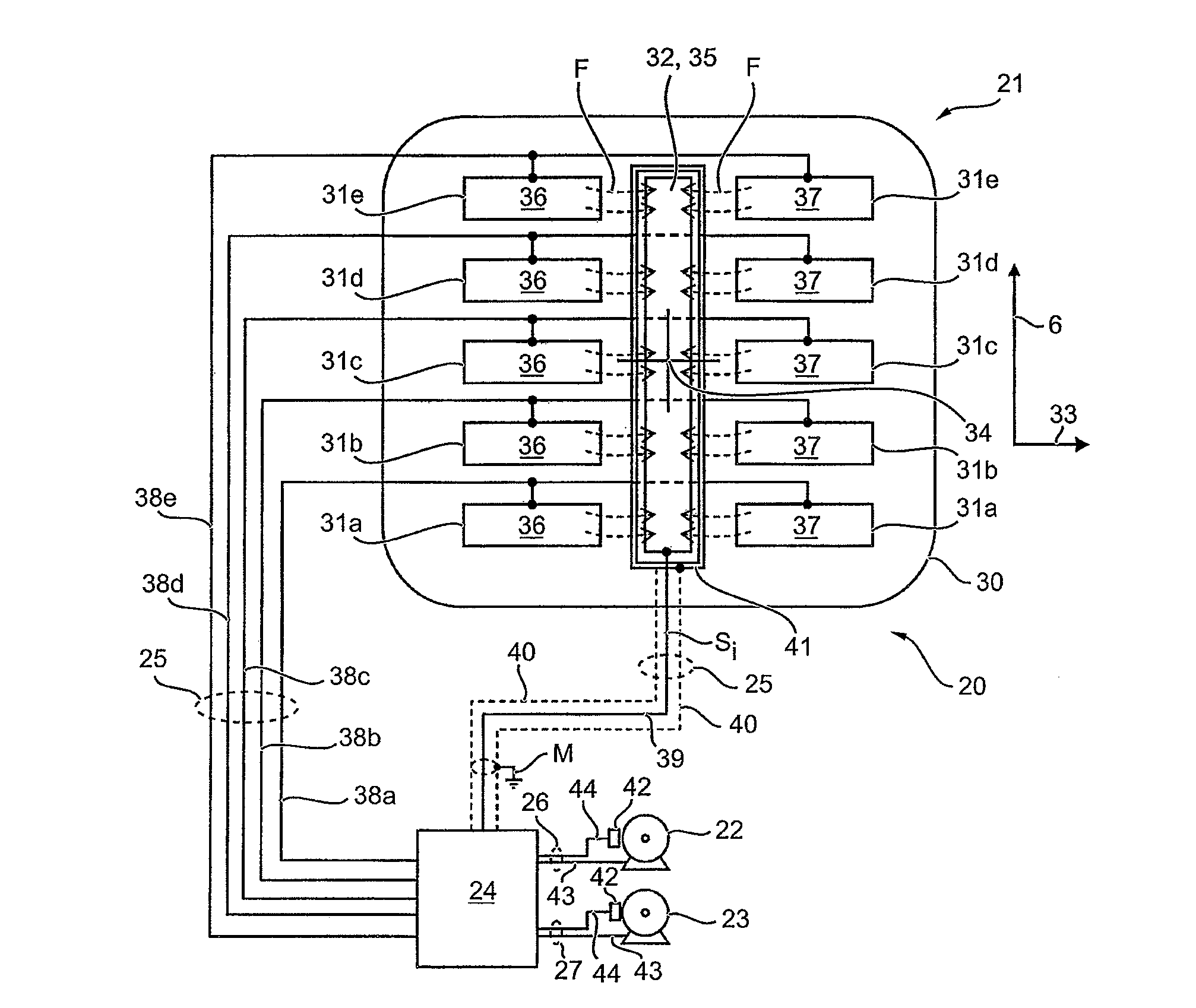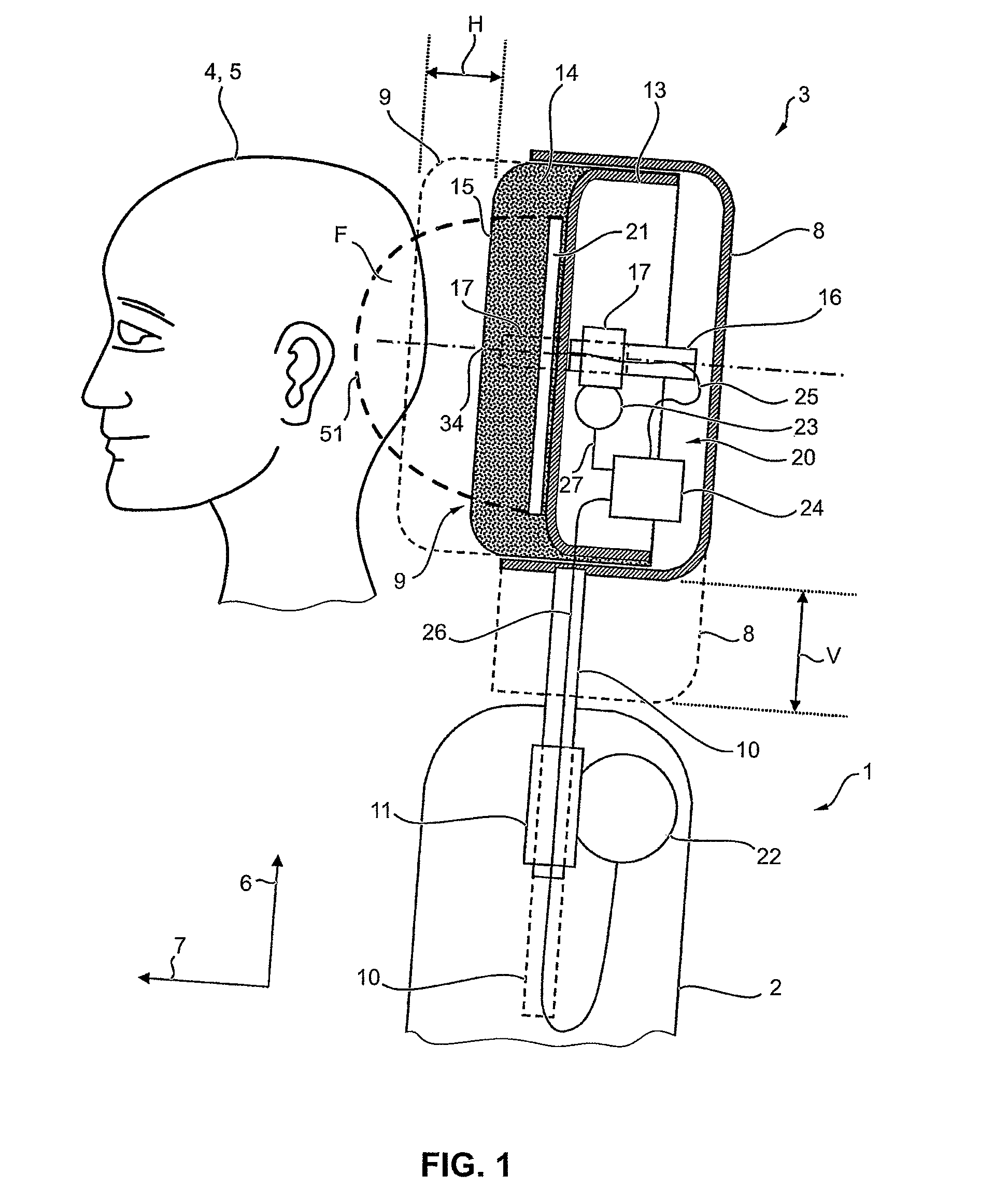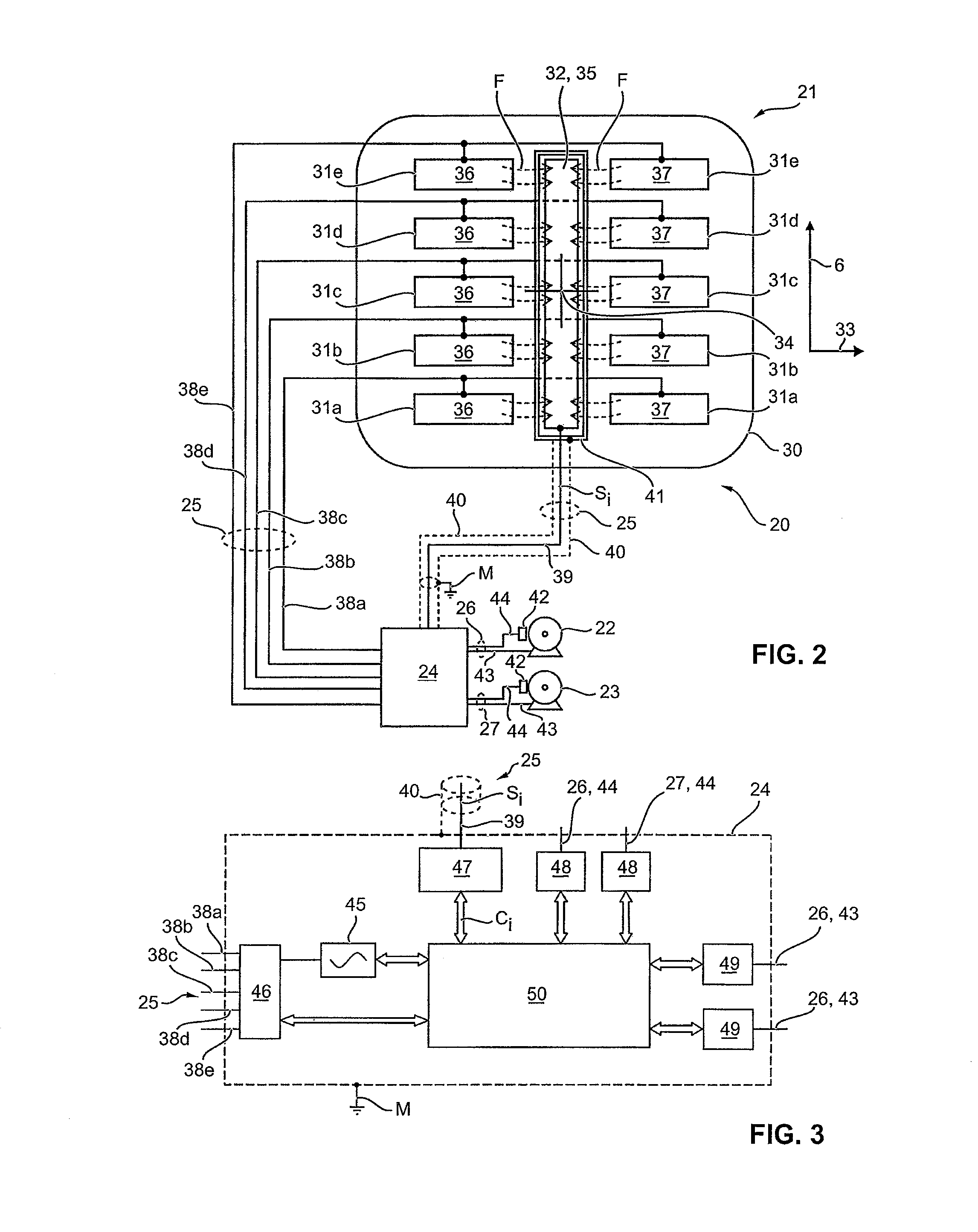Adjusting device for a headrest of a motor vehicle seat
a technology for motor vehicles and headrests, which is applied in the direction of chairs, pedestrian/occupant safety arrangements, instruments, etc., can solve problems such as head and neck injuries, and achieve the effect of reducing the speed of travel and optimal adjustment of the headrests
- Summary
- Abstract
- Description
- Claims
- Application Information
AI Technical Summary
Benefits of technology
Problems solved by technology
Method used
Image
Examples
first embodiment
[0054]FIG. 2 shows the adjusting device 20 in greater detail. As is evident from this representation in combination with FIG. 1, the proximity sensor 21 comprises a flat carrier 30. Mounted on the carrier is an electrode arrangement consisting of five transmitting electrodes 31a to 31e, and a common receiving electrode 32. The carrier 30 is made of a plastic film, preferably flexible. The electrodes 31a to 31e and 32 are made of metal films, preferably also flexible, which are, e.g., glued onto the carrier 30. Alternatively, the electrodes 31a to 31e and 32 can also be applied to the carrier 30 in the form of a coating.
[0055]The carrier 30 extends over a primarily flat region of the headrest 3 in both the vertical direction 6 and a vehicle direction 33 transverse thereto. In particular, the carrier 30 is located approximately centered on a center 34 of the headrest 3 on which the head 4 is intended to impact in the case of a crash.
[0056]The electrodes 31a to 31e and 32 are in turn d...
second embodiment
[0078]FIG. 8 shows the adjusting device 20. Except as otherwise described below, this embodiment is the same as the embodiment of the adjusting device 20 described in conjunction with FIG. 2. However, in place of the transmitting electrodes 31a to 31e there, according to FIG. 8 five receiving electrodes 60a to 60e are provided—with the same geometric arrangement of electrode areas 36 and 37 on the carrier 30. In place of the receiving electrode 32 from the embodiment according to FIG. 2, according to FIG. 8 a common transmitting electrode 61—with the same geometric arrangement of the associated electrode area 35—is provided. A shielding of the individual line 39 is not required here. The guard electrode 41 shown in FIG. 2 can likewise be omitted. In its place, the individual lines 38a to 38e, which connect the control unit 24 to the receiving electrodes 60a to 60e here, are preferably electrically shielded—in particular individually. A suitable shield 53 is indicated schematically i...
PUM
 Login to View More
Login to View More Abstract
Description
Claims
Application Information
 Login to View More
Login to View More - R&D
- Intellectual Property
- Life Sciences
- Materials
- Tech Scout
- Unparalleled Data Quality
- Higher Quality Content
- 60% Fewer Hallucinations
Browse by: Latest US Patents, China's latest patents, Technical Efficacy Thesaurus, Application Domain, Technology Topic, Popular Technical Reports.
© 2025 PatSnap. All rights reserved.Legal|Privacy policy|Modern Slavery Act Transparency Statement|Sitemap|About US| Contact US: help@patsnap.com



